🏁 Speedway Motors Universal Gasser Straight Axle Front Suspension Kit
The Speedway Motors Universal Gasser Straight Axle Front Suspension Kit is designed to transform your hot rod or vintage drag car with period-correct styling and modern handling improvements. Featuring a heavy-duty 48” steel axle and forged ’49-’54 Chevy spindles, this kit provides a strong, lightweight solution for front-end suspension upgrades.
✅ Classic Gasser Stance – 56-1/2” hub-to-hub width for vintage straight-axle look
✅ Engineered for Strength – 2.00” O.D. 0.250” wall steel axle tubing for maximum durability
✅ Heavy-Duty Forged Spindles – Stronger than stock cast spindles for improved reliability
✅ Leaf Spring Suspension – Semi-elliptical 6-leaf springs with 400 lb/in spring rate
✅ Customizable Brake Options – Standard GM metric calipers or Wilwood 4-piston brakes
✅ Steering System Included – Pre-engineered for smooth & precise handling
✅ Designed for Easy Installation – Includes all mounting brackets & hardware
This universal Gasser-style front-end kit is ideal for hot rod builds, drag racers, & vintage projects, offering strength, reliability, & period-correct styling.
🔹 Why Choose the Speedway Motors Gasser Straight Axle Kit?
🏁 Perfect for Hot Rods & Drag Cars – Classic Gasser stance & vintage aesthetics
🏁 Stronger & Lighter than Factory Front Ends – Heavy-duty forged steel components
🏁 Choice of Brake Kits for Ultimate Stopping Power – Standard GM Metric or Wilwood Pro Series
🏁 Complete Kit for Easy Installation – Includes spindles, brakes, leaf springs & steering components
🏁 Built to Handle the Toughest Conditions – Designed for drag racing & performance street use
🔹 Technical Specifications
⚙️ Axle & Suspension Details
| Feature | Details |
|---|---|
| Brand | Speedway Motors |
| Front Suspension Type | Straight Axle |
| Axle Width | 48” Axle (56-1/2” Hub-to-Hub) |
| Axle Tube Material | 2.00” O.D. Steel Tubing (0.250” Wall Thickness) |
| Spindle Style | ’49-’54 Chevy Forged Spindles |
| Spring Type | Semi-Elliptical Leaf Springs |
| Spring Length | 31-1/4” Long x 1-3/4” Wide |
| Spring Rate | 400 lbs/in |
| Shock Type | Not Included (Shock Mounts Included) |
| Steering System | Tie Rod Kit & Steering Arms Included |
| Welding Required | Yes |
🔹 Brake Kit Options
💥 Standard GM Metric Brake Kit
✔️ Ford 5×4.5” or Chevy 5×4.75” bolt patterns
✔️ 9-1/4” vented iron rotors – Improved cooling & braking performance
✔️ GM Metric ’78-’88 Calipers – 2.5” bore for enhanced stopping power
✔️ Pre-installed 7/16″-20 banjo bolt adapter
🔥 Wilwood Pro Series Brake Kit (For High-Performance Builds)
✔️ Forged Dynalite 4-Piston Calipers – Race-proven stopping power
✔️ 10.75” x 0.810” Ultralite HP 30 Vane Rotors – Lightweight & fade-resistant
✔️ Wilwood Polymatrix-D Brake Pads – High-friction pads for superior stopping force
✔️ Lightweight Anodized Aluminum Pro Street Hubs
✔️ Dual-Drilled 5×4.5” & 5×4.75” Bolt Patterns
✔️ 1/2″-20 Wheel Studs
⚠️ Note: Wilwood brakes increase hub-to-hub width by 1/2″
🔹 What’s Included in the Kit?
✔️ 48” Straight Axle – 56-1/2” Hub-to-Hub Width
✔️ Forged ’49-’54 Chevy Spindles – Stronger than stock cast spindles
✔️ King Pins & Bushings – Pre-fitted for smooth operation
✔️ Tie Rod Kit & Steering Arms – Precision steering control
✔️ Leaf Spring Kit – 6-leaf 400 lb/in semi-elliptical springs
✔️ Standard or Wilwood Brake Kit – Choose the best stopping power for your build
✔️ Mounting Hardware & Brackets – All necessary installation components included
🚨 Note: Shocks & Brake Lines Sold Separately
🔹 Recommended Upgrades & Add-Ons
🛠 Suspension & Handling Upgrades
- Gasser Front Shocks – Improves ride quality & dampens road impacts
- Adjustable Steering Stabilizer – Reduces bump steer & improves control
- Heavy-Duty Brake Lines – Ensures reliable hydraulic pressure for brakes
🏎️ Performance Enhancements
- Lightweight Aluminum Wheels – Reduces unsprung weight for better acceleration
- Disc Brake Upgrade (Wilwood Pro Series) – Enhances stopping performance
- Gasser-Style Ladder Bars – Reinforces rear suspension for better launches
❓ Frequently Asked Questions (FAQ)
🔹 Will this fit my vehicle?
- This is a universal fit kit, designed to work with a wide range of hot rods, vintage cars, & drag race builds. Some welding & fabrication may be required.
🔹 What is the total hub-to-hub width?
- The hub-to-hub width is 56-1/2 inches.
🔹 What wheel bolt patterns are available?
- You can choose from Ford 5×4.5” or Chevy 5×4.75” bolt patterns. The Wilwood kit is dual-drilled for both patterns.
🔹 Does this kit include shocks?
- No, shocks are not included, but shock mounts are provided.
🔹 Can I use steel wheels with the Wilwood brake kit?
- Yes, but you will need (2) steel shims (Part # 835-3007500) to prevent galling.
🔹 What is required for brake line installation?
- Rubber brake hoses cannot be adapted to Wilwood calipers. It’s recommended to use steel adapter fittings & braided steel brake lines.
🔥 Call to Action – Upgrade Your Front Suspension Today!
Transform your hot rod or vintage drag racer with the Speedway Motors Universal Gasser Straight Axle Kit! This complete bolt-on solution delivers classic gasser styling, enhanced strength, & superior braking performance.
🛒 Order now & bring your Gasser build to life! 🚀
Installation Tips !
- If using steel wheels with Wilwood kit, you will also need to purchase (2) steel shims part 835-3007500. These shims will prevent steel wheels from galling the aluminum hub.
- Rubber brake hoses generally cannot be adapted to Wilwood calipers. The caliper inlet fitting is a 1/8-27 NPT. The preferred method is to use steel adapter fittings at the caliper, either straight, 45 or 90 degree and enough steel braided line to allow for full suspension travel and turning radius, lock to lock.
Details
These kits include our gasser straight front axle, semi-elliptical springs, spindles, king pins, steering arms, tierod kit, brake kit, and hardware. Choose either 5 on 4-1/2″ or 5 on 4-3/4″ bolt pattern with standard brake kit or Wilwood brake kit. Standard brake kits use new rotors and GM metric style calipers. Wilwood brake kit includes dual-drilled hub. Brake lines not included. Shocks not included, but shock mounts are included. Assembly required.
- 48 inch
Note: Wilwood brakes increase hub-to-hub width by 1/2″.
-Wilwood brake kit will not work with ET gasser wheel 91058673. The Wilwood kit only comes with 1/2″ studs for both the 5×4.5 and 5×4.75 bolt pattern. If you would like to use the 5×4.75 pattern, you will need to source a set of screw in 7/16″ wheel studs.
Item Details
49-54 Chevy Spindles, Specify bolt pattern,
48″ Wide axle – 56-1/2″ hub to hub.
- Not For Off-Road Race Use
Charts
-
910-3948 Instructions (PDF)
-
5 x 4-1/2 & 4-3/4 Brake Kit Instructions (PDF)
-
Wilwood Brake Instructions (PDF)
-
Gasser Info (PDF)
Specs
Gasser Kit w/ “Chevy” Spindles
- Leaf springs, 31-1/4″ long x 1-3/4″ wide
- 6 leaf, 1/4″ thick
- 400 lbs/inch spring rate
- Chevy-style spindles (forged steel)
- Modeled after the 1949-54 Chevy passenger car spindle
“Chevy” Spindle Standard Brake Kit
- 5 x 4-1/2″ Ford/Mopar bolt pattern
- 9-1/4″ vented iron rotor, .890″ thick
- Hub flange (hat) diameter – 5.74″
- 1/2″ Fine wheel studs
- GM Metric ’78-’88 calipers, 2-1/2″ piston
- 7/16″-20 banjo bolt to AN-3 line adapter kit
- 5 x 4-3/4″ GM bolt pattern
- 9-1/4″ vented iron rotor, .890″ thick
- Hub flange (hat) diameter – 5.74″
- 7/16″ Fine wheel studs
- GM Metric ’78-’88 calipers, 2-1/2″ piston
- 7/16″-20 banjo bolt to AN-3 line adapter kit
“Chevy” Spindle Wilwood Brake Kit (must use 15″+ wheels)
- Forged Dynalite 4-piston Calipers
- 10.75″ x .810″ Ultralite HP 30 Vane iron rotors
- Wilwood Polymatrix-D Pads – very high cold friction, high fade/glaze resistance to periodic heat
- Lightweight anodized aluminum Pro Street hubs
- 1/2″-20 wheel studs
Guides & Documents
-
Front Suspension Kits Instruction Sheet (9103948)(PDF)
-
Front Suspension Kits Instruction Sheet (9103948)(PDF)
-
Front Suspension Kits Instruction Sheet (9103948)(PDF)
-
Front Suspension Kits Guide/Document (9103948)(PDF)
-
Leaf Springs Guide/Document (91033029)(JPG)
-
Spindles Guide/Document (91032100)(JPG)
-
Steering Arms Guide/Document (91632026)(JPG)
-
Steering Arms Guide/Document (91632026)(JPG)
-
Steering Drag Links Guide/Document (91631)(JPG)
-
Brake Calipers Instruction Sheet (8351206816)(PDF)
-
Disc Brake Pads Guide/Document (8351508850K)(PDF)
-
Spindle Hardware Guide/Document (83537010090)(PDF)
-
Disc Brake Pads Guide/Document (9193381)(JPG)
Everything You Need to Know About Converting Drum Brakes to Disc
Drum to Disc Brake Conversions, or Why Did I Not do This Sooner?
It’s easy to take for granted all the advancements in automotive technology that are wrapped up in our modern daily drivers, but if you wind back the clock all these safety, convenience, and comfort updates were at one time an expensive option, or possibly not even available in the time period of your project car. The humble disc brake system is just such a feature we are referring to here. Developed around the turn of the 20th Century, disc brakes would not become a popular option until the early 1960s and were only seen mainly on sports cars of the time, both domestic and foreign. Even well into the early 21st Century you could still find vehicles with rear drum brakes, however it is the rare base model budget vehicle that isn’t 4-wheel disc brake equipped these days.
Manufacturers started offering disc brakes for their one two punch of better braking performance coupled with fewer moving parts for assembly line simplicity. Drum brakes may sometimes be lighter overall but are far more complicated to install (both from an assembly line standpoint and from a service standpoint), and are more susceptible to brake fade, contamination, and thermal breakdown of the shoes, springs, and other parts. Whereas disc brakes have fewer moving parts, run cooler, and are less susceptible to brake fade. For this very reason manufacturers slowly adopted disc brakes as the standard front brake system on vehicles moving into the 1970s and beyond. Today you can update just about anything on four wheels to run front disc brakes (at a minimum) or even 4-wheel disc brakes thanks to companies like Speedway Motors, where hundreds of disc brake upgrade kits are available for everything from pre-war hot rods to muscle cars, and classic trucks.
What Is the Difference Between Drum Brakes and Disc Brakes?
While we briefly touched on some of the benefits of disc brakes (and issues with drum brakes) in our opening copy, we wanted to take a moment to really explain in detail how each braking system works. Once you understand how drum and disc brakes differ in their function and ability to stop your car, you’ll fully understand our buyer’s guide’s intro when it says, “Why didn’t I do this sooner!”

We’ll start with drum brakes, as that is what many of you are considering replacing with modern disc brakes via a conversion kit of some sort. The drum brake system consists of a backing plate, which mounts the primary and secondary brake shoe linings, a hydraulic wheel cylinder, and mounting hardware/return springs that secure the brake shoes and wheel cylinder in place. The assembly is covered by a brake drum which is keyed to the wheels via the axles or hubs and wheel studs. When hydraulic pressure is applied via the brake pedal and master cylinder, the wheel cylinder’s internal pistons push outward on the brake shoes, which move outward and contacts the drum, applying friction force to slow the drum, which in turn slows the connected wheels.
Drum brakes certainly got the job done back in the day, but are well known for their issues, including retaining heat that can introduce brake fade, more complex assembly with more moving parts, brake “grabbing” when wet, and the need for regular manual cleaning of the drum brake assembly. Now consider today’s highway speeds, the increased performance we add to our classic muscle cars, hot rods, and pickup trucks, and it is easy to see why drum brakes simply are unsafe by today’s standards. See for yourself in this NHTSA report on the benefits of dual bowl master cylinders and upgrading drum brakes to disc!

Disc brakes, on the other hand, are a lot less complex in their function and are easier to service. They are less prone to wet weather “grabbing” and are self-cleaning as well. To top it off, they are lighter, have better stopping power, and can dissipate heat more easily due to their “open” design. All check marks in the right column and just goes to prove why most everyone wants to update to disc brakes on their classic drum brake ride. Thankfully, disc brake conversion kits/upgrades are pretty much a bolt on and go affair these days taking nothing more than basic hand tools and an afternoon of garage time!
While the drum brake applies outward force on the brake shoes to slow the brake drum, a disc brake system works more efficiently in a “C-clamp” manner by utilizing a caliper assembly with one or more pistons that is placed over the disc brake rotor (which is keyed to the wheels via the axle or hub, just like a drum brake). This clamping force is greater than that of what a drum brake can apply, and this is where the self-cleaning function comes into play, as the disc brake pads themselves scrape away old lining material, dirt, and debris to keep the brake rotor clean. The “open” nature of the disc brake system also means greater heat dissipation compared to the enclosed brake drum covering the drum brake components.
How Do You Convert Drum Brakes to Disc Brakes?
We’ve explained the differences between drum and disc brakes and all the great reasons why you’d want to run disc on at least the front of your hot rod, muscle car, or classic truck, but the real question for most is how the conversion is accomplished. While we do not have the room within our buyer’s guide to go into detail about every make and model conversion offered (that’s what the product instructions are for!) we can provide an overview of the conversion process to give you a rough idea what you’re in for. But don’t worry, all the kits we sell provide everything you need to get the job done with full instructions, so think of this as just a primer.
So many early muscle cars and certainly pre-war hot rods were built with drum brakes as the primary front braking system it is a solid bet if you pick up a project vehicle it’s still going to be rolling on drums (and they’ll quite possibly be seized up from sitting too!). Obviously, the first step will be to remove the old drum brake components. For the front brakes we are focusing on that means removing the drum with bearing hub, and then the backing plate with brake shoes, wheel cylinder, and hardware can usually be removed as a complete assembly. Disc brake kits require their own flexible brake hose that differs from a drum brake hose, so remove the old hose at the frame rail connection and at this point you should have a bare drum brake spindle to clean up and prepare.

The typical drum to disc brake conversion kit provides an adapter and specific sized wheel bearings that allow a popular disc brake rotor to install on the original drum spindle. Once the rotor is fitted the disc brake caliper is mounted via a custom caliper adapter bracket. So, for many a drum to disc conversion kit if the drum brake spindle is in serviceable condition, you’re good to go. For many hot rod applications, we do offer replacement drum spindles that are a modern forged spindle. The forging is stronger than the original cast spindle, plus any clearance or machining normally required for the disc brake kit to allow it to be installed is already built into this new spindle, making it an easy swap. These spindles are the perfect answer if you’re building from scratch or if your original spindles are damaged from a bad wheel bearing, bent from an accident, or other such issue.

Moving into the muscle car and classic truck drum to disc brake conversion it can quite often require replacing the drum brake spindle for a disc brake spindle. If this is the case our disc brake conversion kit will either include the required spindles or will provide details on where to source disc brake spindles for your conversion. However, we do offer several drum to disc brake conversion kits for muscle cars that retain the drum brake spindle as well, making the swap an easy one providing your spindles are good to go. Many of our replacement spindles are offered in a drop option, providing a 2- or 3-inch drop, which produces the lowered stance many want without affecting suspension ride quality and handling.

Rear disc brake conversions install typically like the popular front disc brake conversion kits, though many will argue their effectiveness on lighter cars and pickup trucks. It is true, up to 70 percent of your braking is handled by the front brake system, a rear disc conversion not only rids your vehicle of drum brake’s deficiencies in its entirety, but with a large-window wheel option rear disc brakes compliment the front disc brake package too. For the minimal additional cost (generally a slip-on rotor with brake caliper and adapter bracket), we highly recommend the addition of a rear disc brake conversion to your build. This way you’ll never have to mess with the intricacies of a drum brake system and their inherent problems ever again.









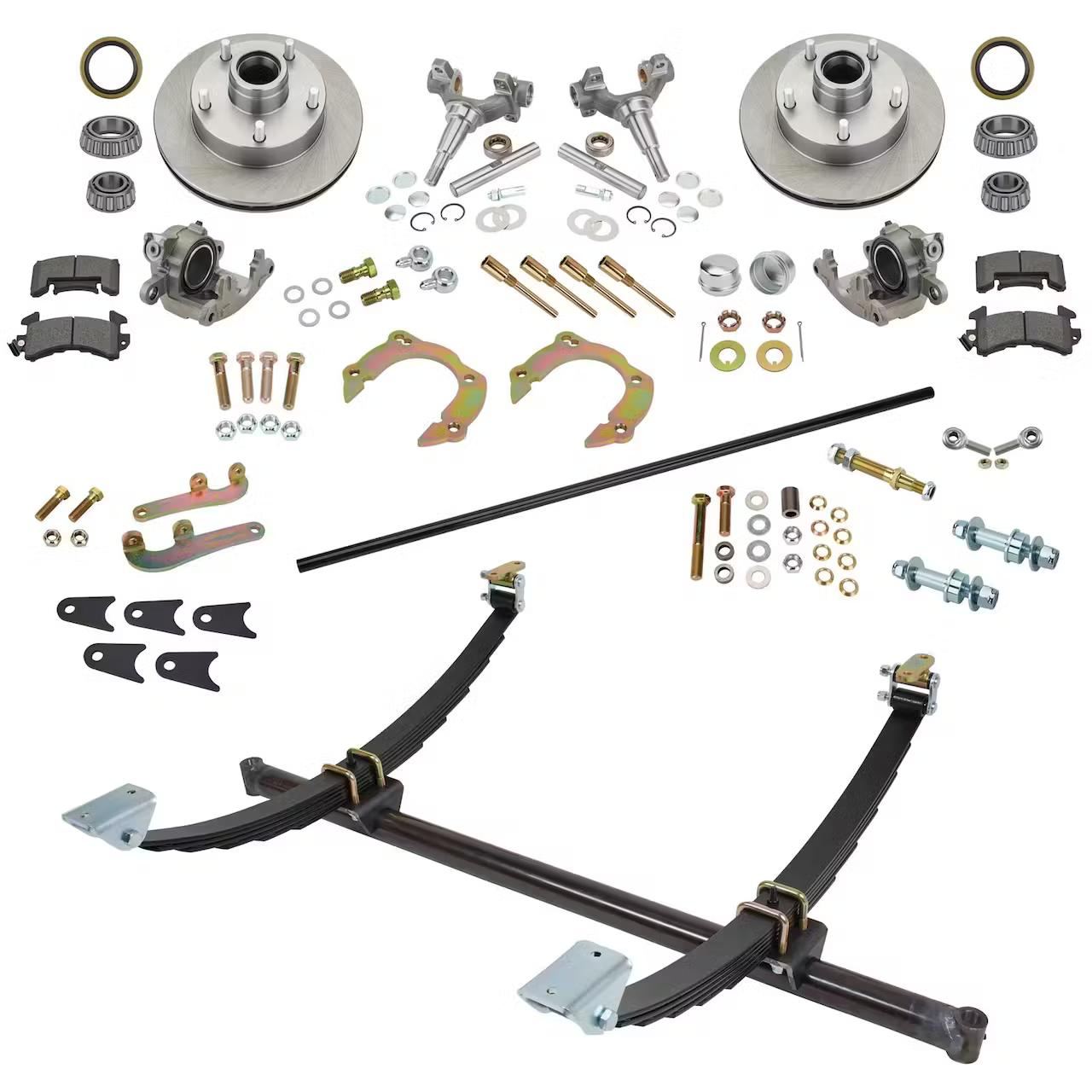
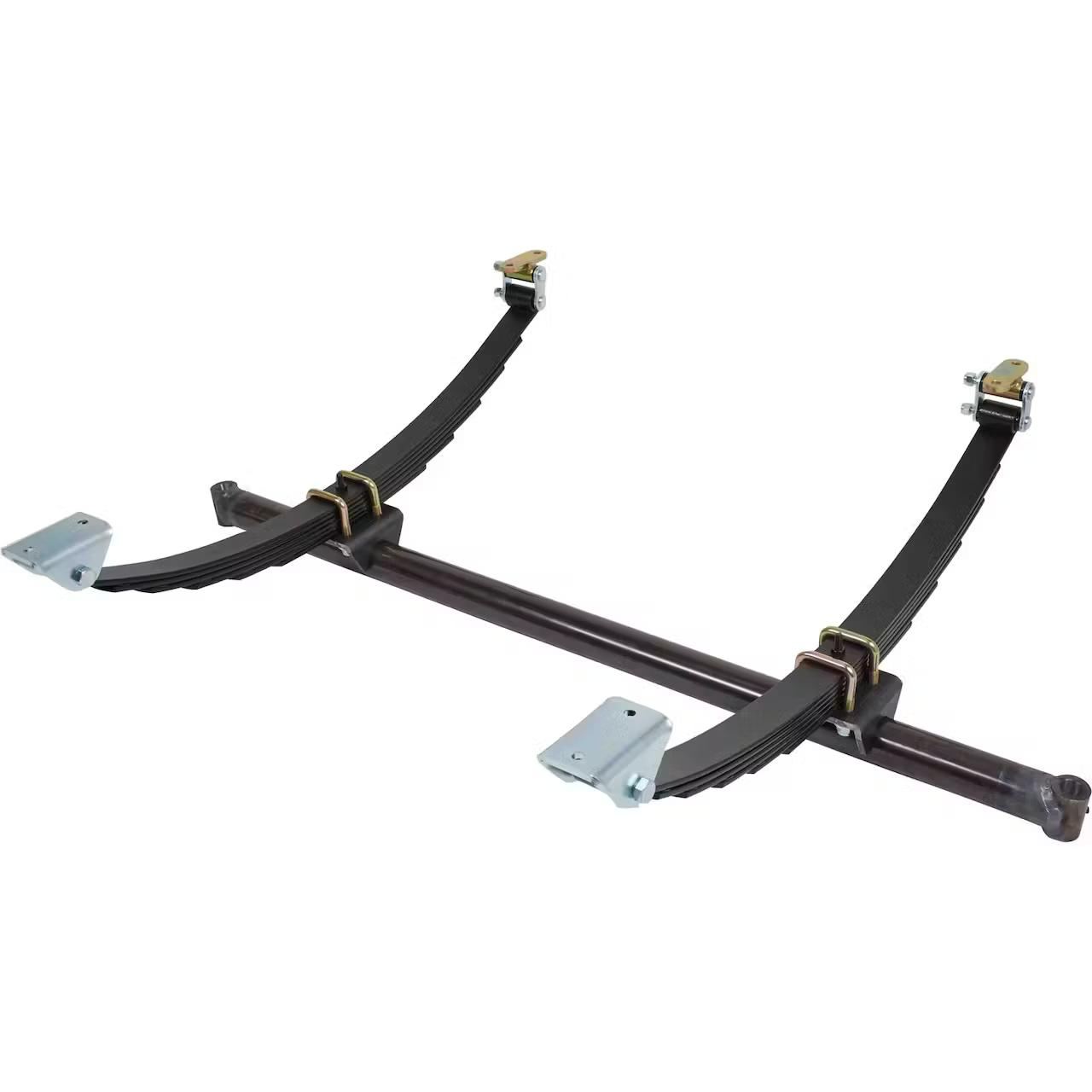
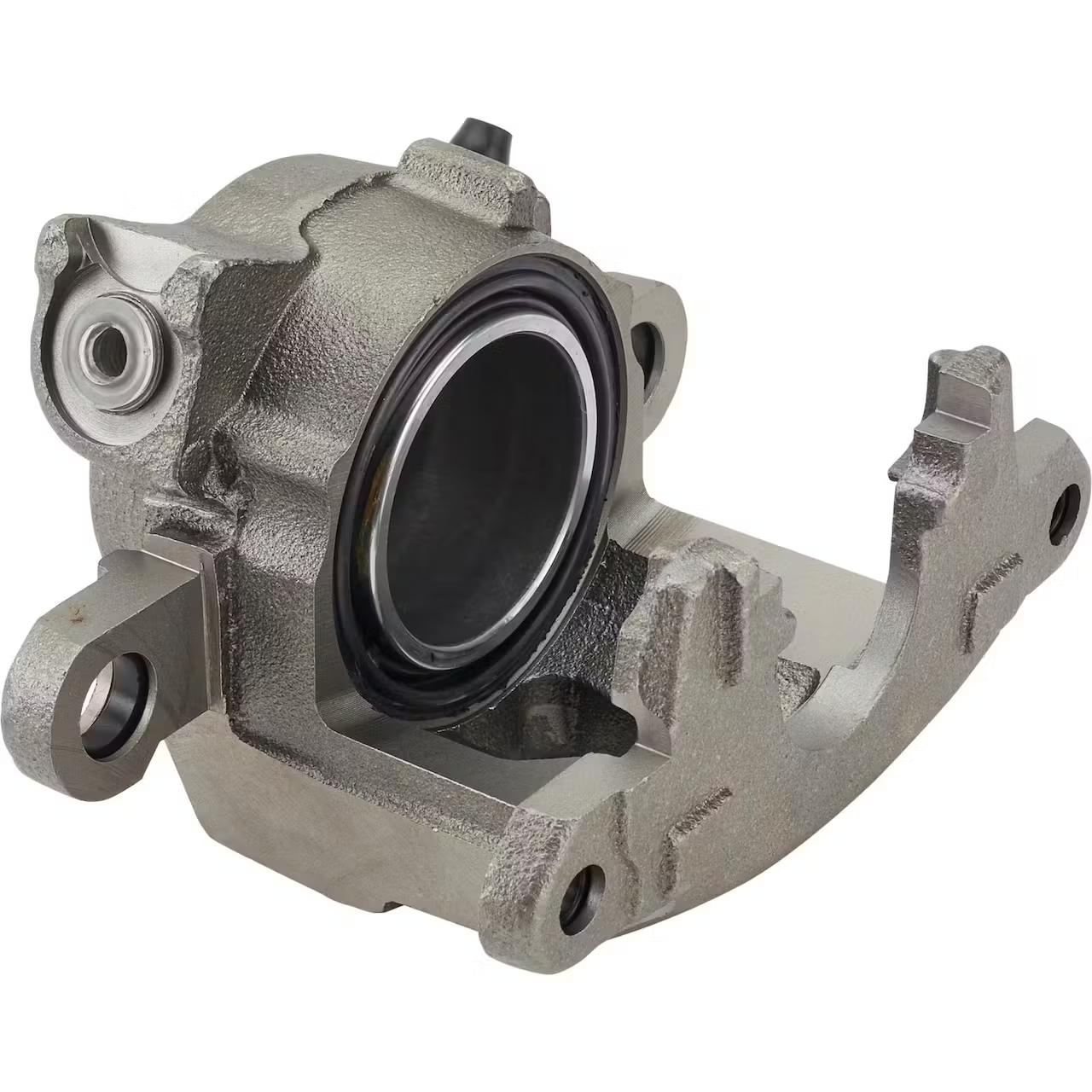
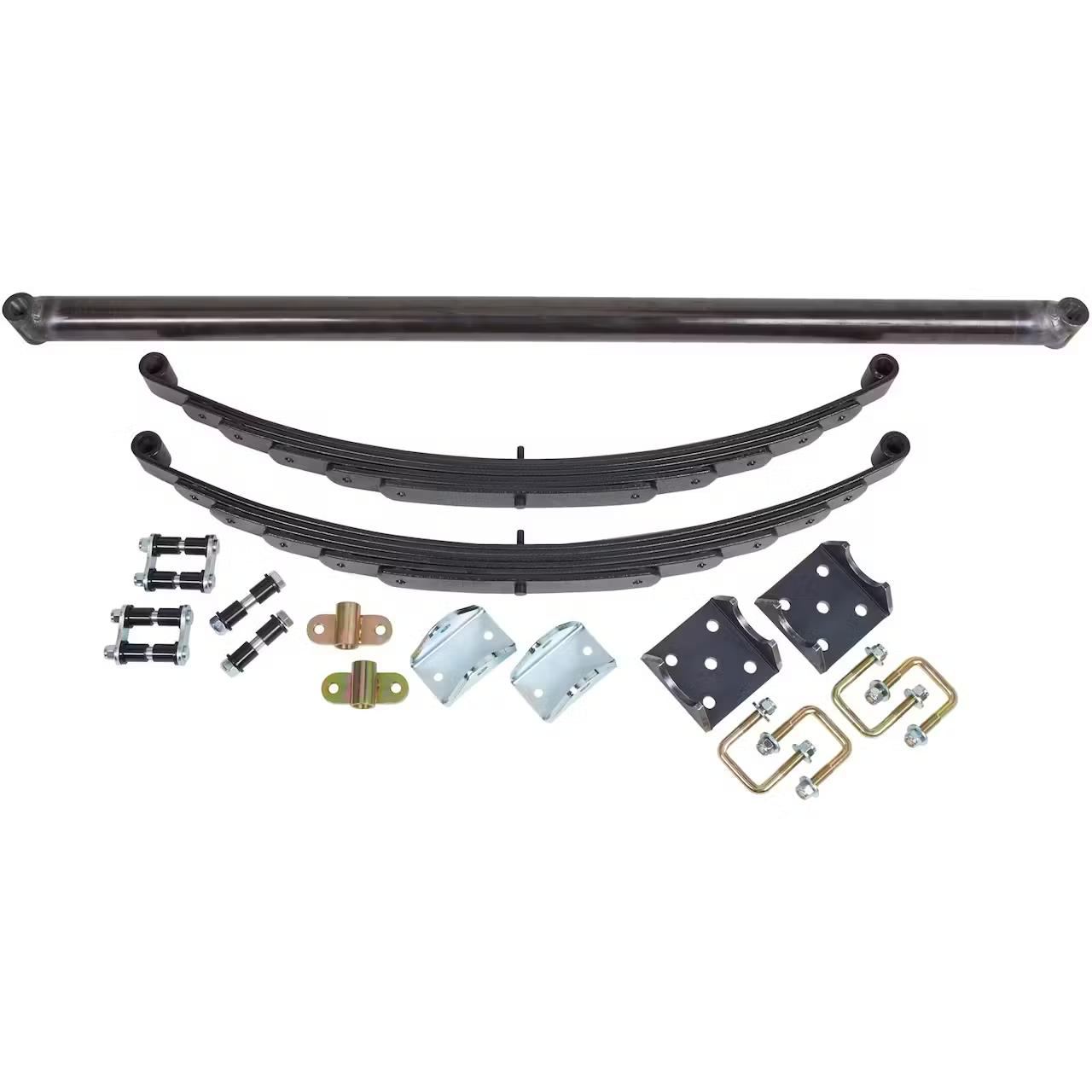
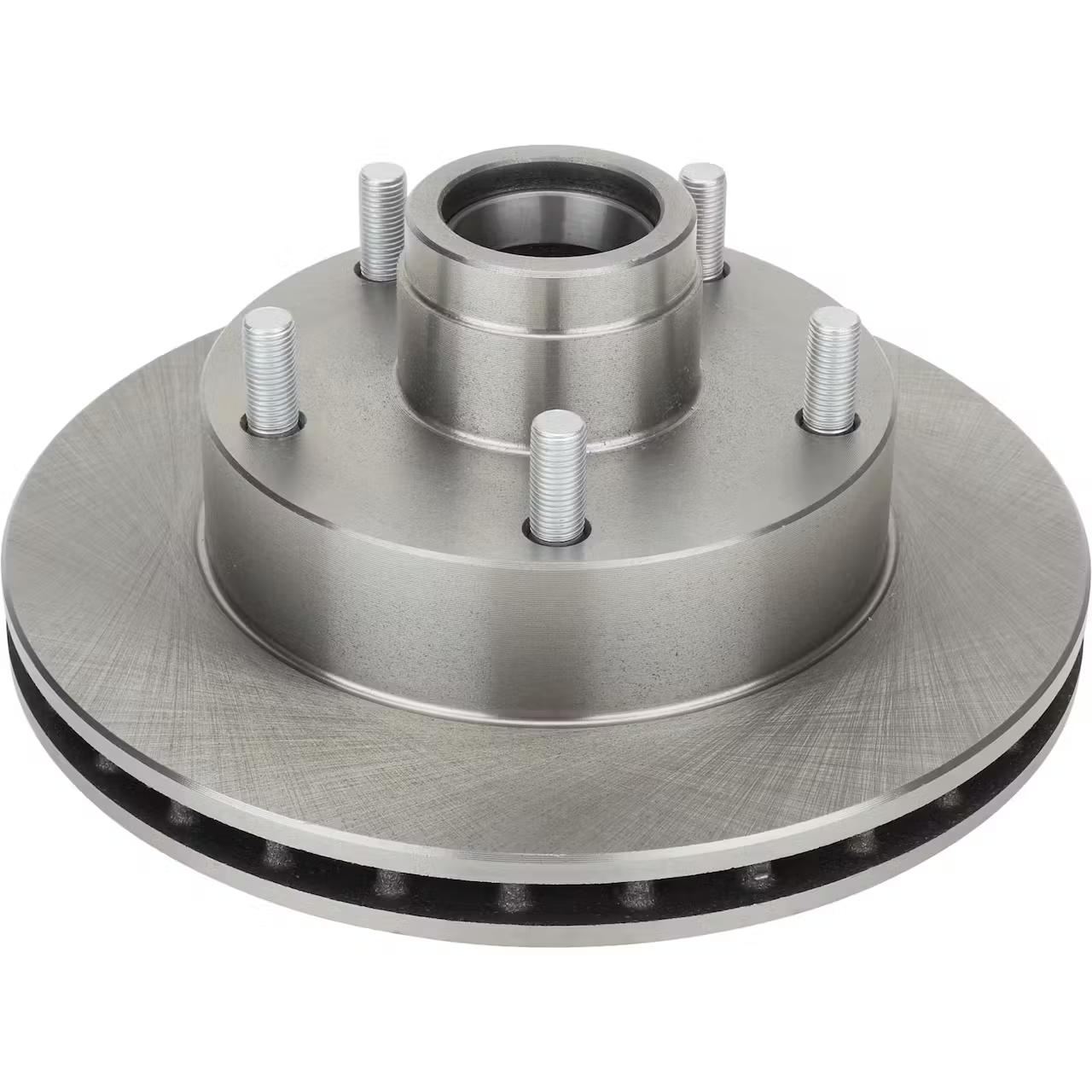
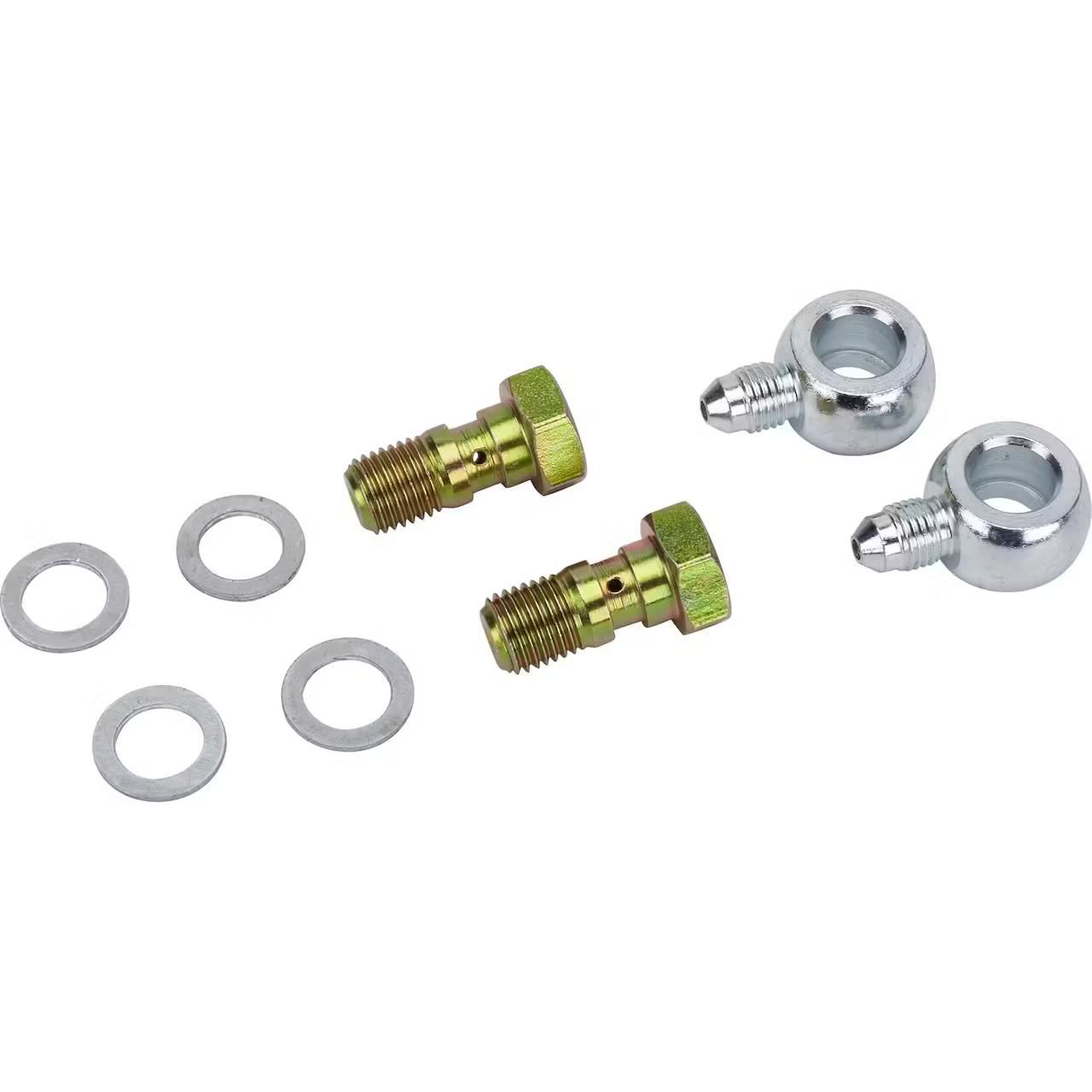
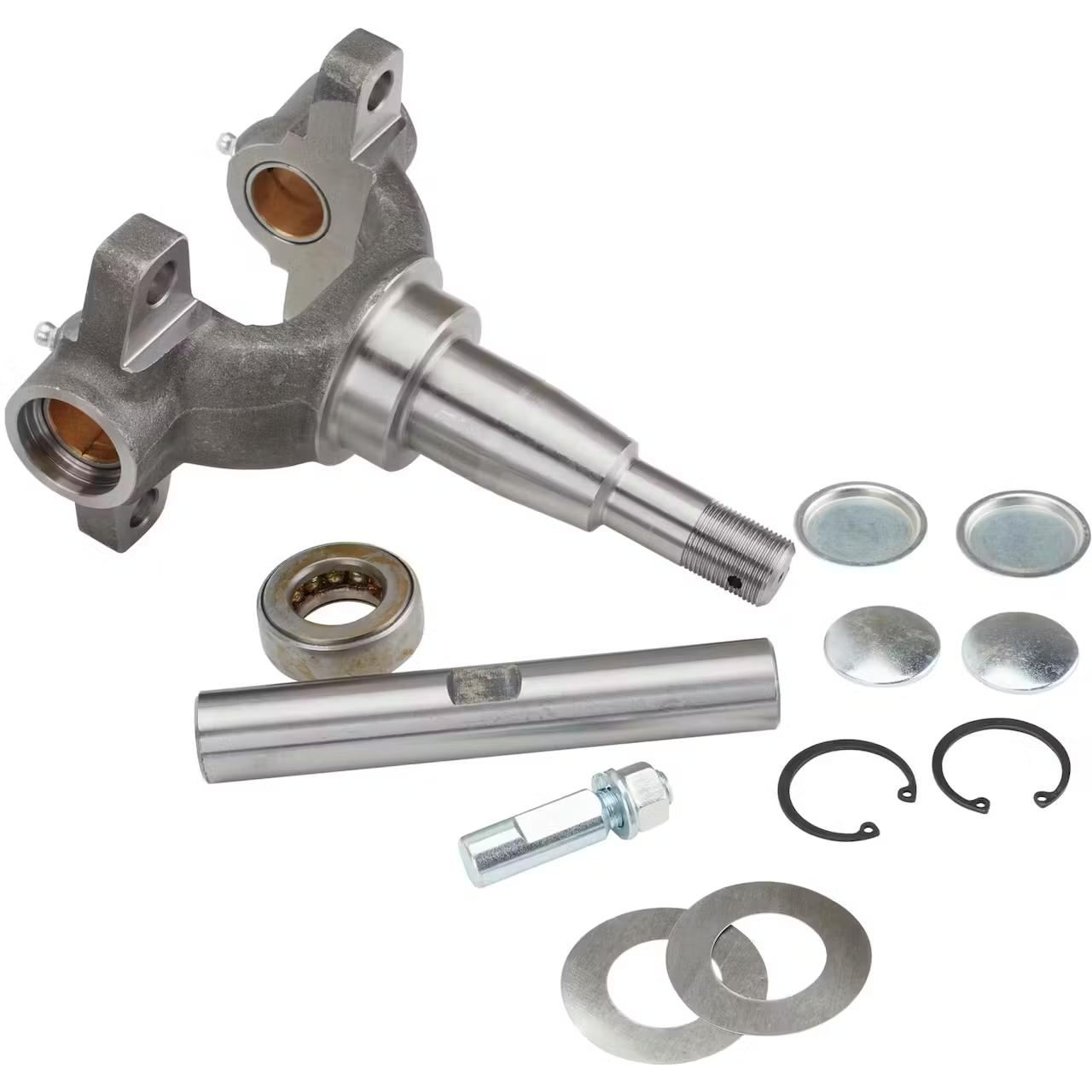
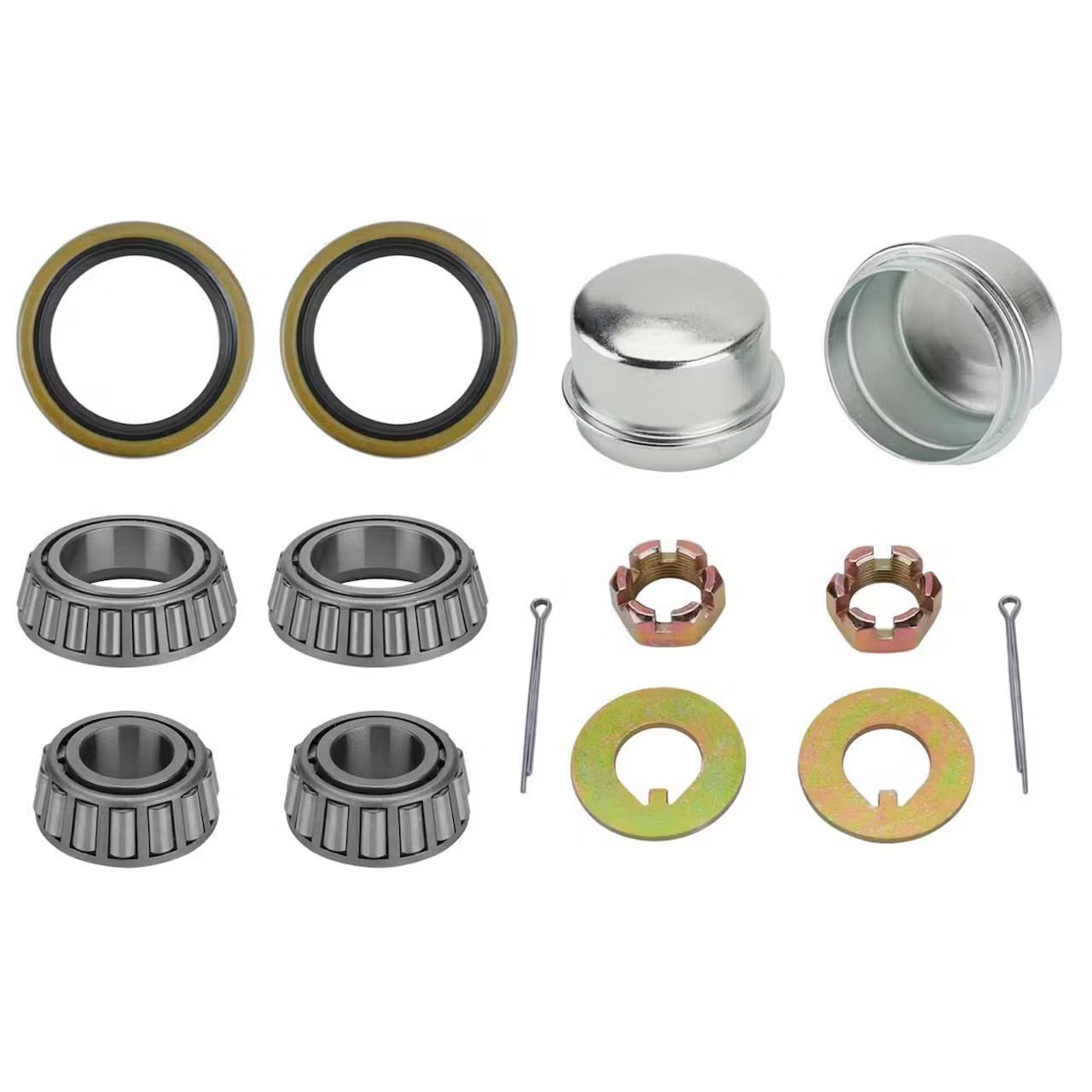















Reviews
There are no reviews yet.